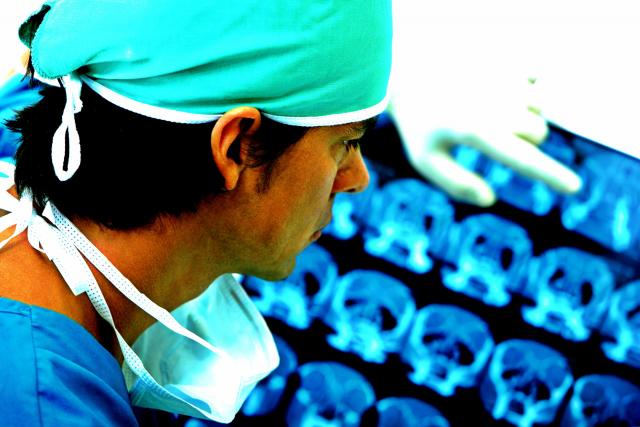 PS Productions/PhotoSpin
PS Productions/PhotoSpin
Imagine this: You go for a jog through the hilly woods and your breath becomes shorter than usual, you break out in a cold sweat and feel a bit lightheaded. But you don’t notice the signs of a heart attack because you’re working hard and attribute the symptoms to exercise fatigue. However, your clothing, which has been monitoring your vitals, hormones and emotional state, doesn’t make this mistake. Soon your thumping music is interrupted by a Skype call from your doctor who asks a few questions, and then dispatches paramedics to your GPS location.
This is the future of health care, and it’s not far away.
As medical technology steadily improves, health professionals are looking at ways to revolutionize and evolve the medical landscape — from how hospitals are designed, to developing new treatment methods and more intimate outpatient care.
The intimate approach comes into fruition as hospitals have been witnessing a decline in inpatient admissions (down to 111 admissions per 1,000 people in 2011 from 123 per 1,000 in 1991), and an increase in outpatient care partly in thanks to better technology, according to an analysis of American hospitals by Avalere Health.
The study specifically cites less invasive surgical techniques and improved anesthesia management as reasons for increased outpatient care. Some doctors suggest because of new tools like video chatting services, smart clothing, various treatment management systems and diagnostic smartphone apps, outpatient health care will become immersed in a virtual world where physicians are a click away from monitoring their patients’ vitals, diagnosing illnesses and recommending treatments — all without actually meeting face-to-face, which saves everybody involved time and money. These advancements are particularly useful in rural areas that might not have the medical infrastructure or experts found in larger cities because physicians can consult in real time with their more specialized colleagues.
When a patient is required to see their physician, they’ll discover the face-to-face interaction has become far more personalized as well. Physicians and nutritionists are utilizing patients’ genes to identify risk factors for possible ailments, and offer precise treatment methods that might work better for targeting a specific genetic disorder. Genome sequencing is valuable for patients, their families, physicians and medical institutions, said Howard Jacob, Ph.D., director of the Human and Molecular Genetics Center at the Medical College of Wisconsin, in a report by U.S. News. Although the practice isn’t widespread yet, genome sequencing will soon become a very common part of our medical lives, Jacob said in the report.
Besides customizing treatment for a patient’s genetic makeup, investments into medical technologies like 3D printing are also improving the quality and personalization of care received. Advancements in 3D manufacturing allow physicians and researchers to create numerous organs and implants that the body doesn’t reject as invasive, customize skull replacements in the case of head trauma or brain swelling, print form-fitting artificial limbs and prosthetics for amputees, make customized casts that improve bone healing, and grow synthetic skin grafts for those recovering from serious burns or scars.
Personalizing the entire treatment process is shaping how hospitals are designed as well.
For centuries, hospital layouts have mostly focused on the requirements of doctors and nurses, said Chu Foxlin, who designs hospital interiors for TK&A Architects in Cambridge, Mass., in a Post-Gazette article. Foxlin said that the focus on staff members is why hospitals often have harsh environments with bright lights so the staff can see things starkly, and a loud intercom system so doctors and nurses know where to go. While it works great for the physicians, it’s not the calmest environment for patients to heal in.
Hospitals throughout the country are now being modernized to make patients the forefront focus, and let healing and preventative care push harsh environments to the backseat. That isn’t to say that the atmosphere in emergency rooms, intensive care units and specialized treatment wards is going anywhere. But in accordance to various prevention previsions in the Affordable Care Act, hospitals are transforming to expand their services to engage communities, keep patients healthier through lifestyle choices and create a serene environment that promotes speedy recoveries.
Part of that environment, researchers say, is developing hospitals with private rooms that have large windows to allow natural lighting, noise-stifling walls, and mental stimulation, which will result in shorter, healthier stays for patients. Privatization of rooms has been a trend since the ‘90s, but the modernization of these areas is bringing about impressive possibilities. In August 2013, the non-profit design firm NXT Health revealed its Patient Room 2020 design, which completely restructures the single-patient room with new technological integrations and sterilization techniques. The room’s surfaces are non-porous and remove hiding areas for bacteria to flourish, and anti-microbial fabrics help prevent outside contagions from roosting in the bedding materials. When a nurse enters the room the sink is bathed in red light, reminding them to wash their hands. Patients are given tablets that can contact nurses, check their treatment progress, play games, and control room temperature and light settings. The floors are softened in case of a fall, and if a patient steps on the floor at night the pathways between the bed and bathroom are illuminated.
Besides recreating how a room interacts with the patient, some hospitals are also adding kitchens with food preparatory classes to teach patients how to eat healthily once they’re out, and more luxurious hospitals are adding special resort-style recovery areas to ease stress for patients and employees alike.
The advancements in personal health care technology combined with the modernization of hospitals can usher in a new era of doctor-patient relationships, and give people the monitoring tools necessary to control more of their medical lives.





Add a CommentComments
There are no comments yet. Be the first one and get the conversation started!